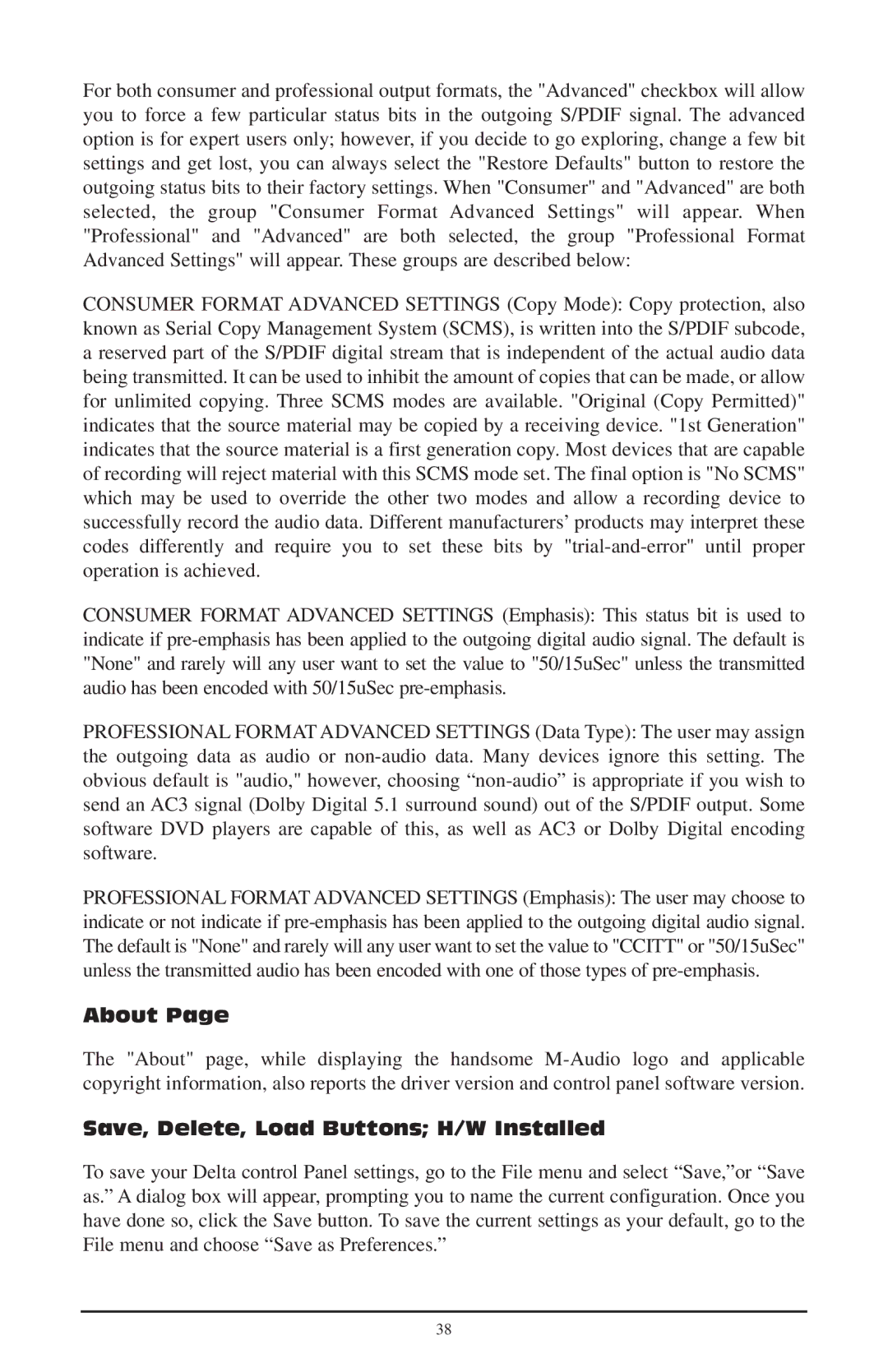For both consumer and professional output formats, the "Advanced" checkbox will allow you to force a few particular status bits in the outgoing S/PDIF signal. The advanced option is for expert users only; however, if you decide to go exploring, change a few bit settings and get lost, you can always select the "Restore Defaults" button to restore the outgoing status bits to their factory settings. When "Consumer" and "Advanced" are both selected, the group "Consumer Format Advanced Settings" will appear. When "Professional" and "Advanced" are both selected, the group "Professional Format Advanced Settings" will appear. These groups are described below:
CONSUMER FORMAT ADVANCED SETTINGS (Copy Mode): Copy protection, also known as Serial Copy Management System (SCMS), is written into the S/PDIF subcode, a reserved part of the S/PDIF digital stream that is independent of the actual audio data being transmitted. It can be used to inhibit the amount of copies that can be made, or allow for unlimited copying. Three SCMS modes are available. "Original (Copy Permitted)" indicates that the source material may be copied by a receiving device. "1st Generation" indicates that the source material is a first generation copy. Most devices that are capable of recording will reject material with this SCMS mode set. The final option is "No SCMS" which may be used to override the other two modes and allow a recording device to successfully record the audio data. Different manufacturers’ products may interpret these codes differently and require you to set these bits by
CONSUMER FORMAT ADVANCED SETTINGS (Emphasis): This status bit is used to indicate if
PROFESSIONAL FORMAT ADVANCED SETTINGS (Data Type): The user may assign the outgoing data as audio or
PROFESSIONAL FORMAT ADVANCED SETTINGS (Emphasis): The user may choose to indicate or not indicate if
About Page
The "About" page, while displaying the handsome
Save, Delete, Load Buttons; H/W Installed
To save your Delta control Panel settings, go to the File menu and select “Save,”or “Save as.” A dialog box will appear, prompting you to name the current configuration. Once you have done so, click the Save button. To save the current settings as your default, go to the File menu and choose “Save as Preferences.”
38
